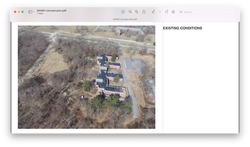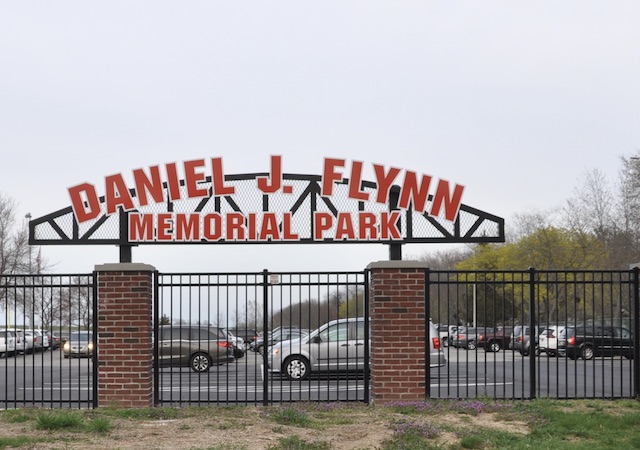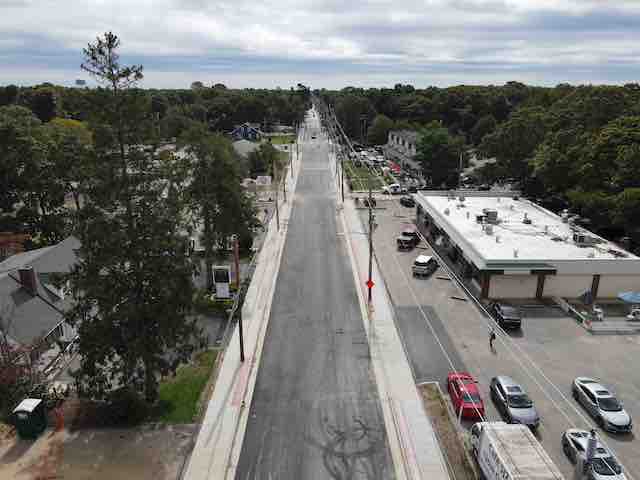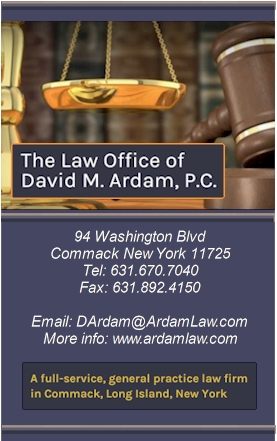News of Long Ago - "Susan Butler Matties Francis Cleaveland Huntington and the Huntingtons Build A Home In St. James"
 Friday, November 8, 2013 at 5:18PM
Friday, November 8, 2013 at 5:18PM News of Long Ago by Bradley Harris, Smithtown Historian
(I have been writing about the descendants of John Lawrence Smith and the contributions they made to Smithtown history. My last article was about Charles Butler, John Lawrence Smith’s grandson, and his role in Smithtown’s past. This article is about John Lawrence Smith’s granddaughter, Susan Butler, her marriage to Francis Huntington, the home they built in St. James, and the birth of their children – Prescott, William, and Christopher.)
“Susan Butler marries Francis Cleaveland Huntington and the Huntingtons build a home in St. James….”
Susan Louisa Butler was the third child of Prescott Hall and Cornelia Stewart (Smith) Butler. Susan was born on August 10, 1879, in the house known as Bytheharbor in St. James. Like her brothers, Susan Butler was sent to private schools in New York City and then attended a finishing school to complete her education. Two months before her 25th birthday, on June 15, 1904, Susan married Francis Cleaveland Huntington, the son of Reverend William Reed and Theresa (Reynolds) Huntington of New York City. The Huntington family had a long and distinguished past in Connecticut and Massachusetts, and when Susan and Francis were married in 1904, the Reverend William Reed Huntington was serving as the rector of Grace Church Parish in New York City. In spite of the fact that his father held such a prominent position in the Episcopal Church in New York City, Francis and Susan chose to be married in the Episcopal Church in St. James, the little church where the Butler family worshipped whenever they were in St. James.
The uniting of the Butler and Huntington clan was quite an occasion and wedding guests were brought out to St. James from New York City aboard a special LIRR car. The little St. James Episcopal Church must have been packed with Huntington, Butler, and Smith family members who came to the wedding. A reception followed the wedding and it was held at the Butler home “two miles north on Moriches Road” where Bytheharbor was located. One of the wedding guests, Matilde Leverich, remembered her trip to the wedding and she told Barbara Van Lieu about it years later. “Matilde Leverich and her mother, Mrs. Leverich, had come down from New York on the train in the special LIRR car” and when they arrived in St. James, “they went from the St. James station straight to the church where Matilde met Annie Tinker.” Annie Tinker and Matilde Leverich, who both must have been 13 or 14 in 1904, hit it off immediately and struck up a conversation. “Annie invited Matilde to drive with her to the reception at the Butler’s house.” Matilde agreed to do so after discovering that Annie Tinker was driving a “four-in-hand coach” that had “one man with a ‘toot’ (horn) on the boot.” Annie drove Matilde to the reception “circling around and coming in the far” entrance “drive with a flourish.” It was only “after their safe arrival” that Annie confided to Matilde that it was “the first time” the “horses had ever been driven together!” (“Account of the Susan Butler – Francis Huntington Wedding of 1904,” told to Mrs. Barbara Van Lieu by Matilde Leverich in the early 1960’s, biographical information on Susan Louisa (Butler) Huntington contained in the Huntington files of the Long Island Room, Smithtown Library.)
Following their marriage, Francis and Susan Huntington lived in Timothy House, the grand old Smith family home that sits on the north side of North Country Road opposite the Episcopal Church. Lawrence Butler owned this house having acquired it and beautifully restoring it as a colonial homestead in 1903, and he let the “newly-weds” live here “while their house on Moriches Road was being built.” It was in Timothy House where Prescott Butler Huntington was born on July 26, 1905. Prescott was Cornelia (Smith) Butler’s first grandson and to mark the occasion of his first birthday on July 26, 1906, Cornelia presented him with a gift of a house and 96 acres of land in Nissequogue. The house on the neck of land known as Rassapeague was deeded to Prescott Huntington and held in trust by his parents until Prescott was married in 1930 and the house and land became his property. It was a remarkable gift from a grandmother to her grandson and the property remains in the Huntington family’s ownership today.
When Francis and Susan Huntington’s house was completed in 1906, they moved in. Their new home was built south of Moriches Road very near its intersection with Cordwood Path. There is a small pond there and their new house of stucco and stone construction was built in the woods on the hill south of this pond. According to a real estate brochure that advertised this house for sale in 1982 when William R. Huntington sold the property he inherited from his grandmother, the two and a half story house built “around 1907” was constructed of “stucco and concrete” and had “18 rooms arranged around central hallways.” There were “8 master bedrooms,” with “4 master baths, 3 lavatories,” and a “servant’s room and bath.” The house also had “an elevator, abundant closets and several fireplaces.” The estate of 34 acres came complete with an “eight car garage,” a two story brick cottage with six rooms and a bath, and “a barn and other farm buildings.” The brochure pointed out that the property was located on “one of the highest points in the vicinity” and “offered spectacular views” of Long Island Sound “from its terrace, porch, balcony and tremendous windows.” This was the house that became Francis and Susan Huntington’s home whenever they came to St. James in the summer. (Copy of a real estate brochure in the Huntington family files of the Long Island Room of the Smithtown Library dated 1982 by Barbara Van Lieu.)
When the Huntingtons moved into this house in the summer of 1907, their family had grown to include two children. On January 28, 1907, the Huntingtons became the proud parents of a second boy when Susan gave birth to William Reed Huntington. And then on February 27, 1911, a third son, Christopher Huntington was born. The three Huntington boys spent winters in New York City where they were home schooled by tutors, and they spent their summers in the house off Moriches Road in St. James. Their father, Francis Cleaveland Huntington, was an established attorney in Manhattan having been admitted to bar in 1892. Francis Huntington started out his law career in a partnership with Thomas Rhinelander, and by the time he married Susan in 1904, he had become the senior partner of the “noted firm of Huntington, Rhinelander & Seymour.” Unfortunately, Francis and Susan Huntington did not have a long married life together since Francis died in New York City on March 15, 1916, at the age of 51, leaving his young wife of 37 a widow with three small children – Prescott (10), William (8) and Christopher (5). Susan became a single parent and raised the three boys on her own. (Information gleaned from a Butler family genealogy on file in the Long Island Room files of the Smithtown Library.)
Frank Huntington, whose father was Prescott Butler Huntington, remembers the remarkable lady who was his grandmother Susan Butler Huntington. One of the stories that Frank always heard about his grandmother is how she coped with raising three boys after she lost her husband. She decided to take them on a trip to the west coast, and so when World War I ended, she packed up her boys’ belongings in steamer trunks, loaded the boys and their trunks aboard a commercial steamer, and sailed with them through the Panama Canal on a trip to California. She took them to see many of the natural wonders and newly created national parks in California, and then came back home by train. Long before the advent of cruising, Susan Butler Huntington took her boys on a once in a lifetime experience on a trip they would never forget.
From his perspective as Susan Butler Huntington’s grandson, Frank remembers his grandmother lived in the large house near the pond that was called “Butler’s Pond” or “Grandmother’s Pond” by members of his family. He recalls that his grandmother had a big farm with its own farmhouse where the farmer lived who maintained the farm property, cultivated the crops in the vegetable garden, and cared for the chickens and ducks that were raised in coops. It was very much a working farm and Frank has memories of his grandmother making “her own butter, bread and ice cream” in the big kitchen of her home. He recalls watching her work as she made bread for the family and marveling at the strength in her hands as she kneaded the dough. Frank’s mother always took her children with her whenever she stopped by grandma’s farm and Frank recalls that his mother used to follow a weekly routine. They would first stop by “Uncle Charlie’s house” (Charlie Butler’s house on Branglebrink Farm) where they would pick flowers from the beautiful flower gardens that Uncle Charlie cultivated. Then they would stop by Grandma’s house to get the week’s supply of vegetables – “beets, potatoes, swiss chard, freesh eggs,” and whatever else was in season. On week-ends, Frank’s father, Prescott Huntington would take his boys and make a pilgrimage to Larry Smith’s general store to pick up the newspapers and then make a stop at his mother’s house to pick up a chicken and a duck for Sunday’s dinner. Frank remembers that one of his father’s favorite questions as he served chicken and duck to his children was: “What are you going to have? Light, dark, or duck?”
As Susan Huntington’s sons grew up, she sent her boys to boarding school at St. Mark’s School in Southborough, Massachusetts. According to Frank Huntington, “it was one of the better schools of the day” and each of the Huntington boys graduated from this prep school before moving on to attend Harvard University. All three boys graduated from Harvard. Prescott Huntington graduated from Harvard College in the class of 1926 and he decided to pursue a career in law. He attended Harvard Law School graduating in the Class of 1929. William Reed Huntington graduated from Harvard College and then went to the University of Virginia where he studied architecture and became an architect. Christopher graduated from Harvard University and then attended Northwestern University where he got a Master’s degree in German. He subsequently returned to Harvard where he taught German until World War II began. Then he joined the Navy and his experiences in the war made him decide to enter the priesthood and he converted to Catholicism and became a priest.
When Susan Butler Huntington died in 1958, she left this world knowing that her sons had been given the best education that money could buy and that each of her sons had chosen a profession that they felt would give their lives meaning. Each of these Huntington sons would go on in life to have an impact on the Smithtown and the wider world, but that is a topic that will have to wait until next time….
Photograph to accompany this article:
Francis and Susan Huntington’s home, built in 1906 on the west side of Moriches Road on land that Susan had inherited from her mother Cornelia (Smith) Butler. The house is still standing on the hill that is to the south and west of the pond that is near the intersection of Moriches Road and Cord wood Path.









